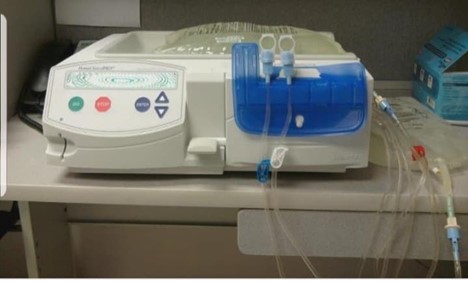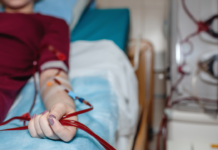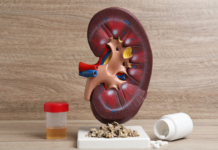Sponsored by: Renadyl™
Did you know that many patients with kidney failure are able to home dialysis on their schedule? The most popular home dialysis is called peritoneal dialysis, or PD. With PD, you’ll go to the clinic just a couple of times a month to meet with your care team. The rest of your dialysis is done at home. So, you may ask what exactly is peritoneal dialysis or PD? Let’s take a look at what is peritoneal dialysis and how does it work.
What is peritoneal dialysis and how does it work?
Peritoneal dialysis is a treatment for kidney failure that uses the lining of your abdomen, or belly, to filter your blood inside your body. This lining is referred to as the peritoneum. Before a person start peritoneal dialysis, a surgeon places a soft tube, called a catheter, in the belly. When a patient starts peritoneal dialysis treatment, dialysis solution—water with salt and other additives-flows from a bag through the catheter into your belly. When the bag is empty, you disconnect it and place a cap on the catheter so you can move around and do normal activities. When the dialysis solution is inside your belly, it absorbs wastes and extra fluid from your body. After a few hours, the solution and the wastes are drained out of your belly into the empty bag. You can throw away the used solution in a toilet, tub, or sink. After that, then you start over with a fresh bag of dialysis solution. You repeat the process of emptying the used solution and refilling your belly with fresh solution four to six times every day. This process is called an exchange. You can do your exchange during the day, or at night using a machine that pumps the fluid in and out.
There are different types of PD with a machine:
Your doctor may describe different versions of PD with the machine. Both versions are usually done overnight while you sleep.
- Type 1 is called Continuous Cycling Peritoneal Dialysis. With this type, you may need to keep some dialysis solution in your body during the day.
- Type 2 is called Nocturnal Intermittent Peritoneal Dialysis. With this type, you may not keep fluid in your body during the day.
Your doctor should help you choose the best option for you. There is another PD option called Manual Peritoneal Dialysis (Continuous Ambulatory Peritoneal Dialysis). While many people use a machine to do their PD, some do it by hand. Here’s how it works:
- Add dialysis fluid to your body using an IV bag. Then, go about your days
- After 4 to 8 hours, connect an empty bag and drain the fluid from your body.
Repeat the process by adding new fluid. Most people do this 3 to 4 times a day. Each time takes about 30 minutes.
PD Considerations:
Like all medical treatments, there are some things to consider:
- PD requires that you do the dialysis treatments on your own or with a partner. The dialysis center gives you all the training needed.
- PD requires supplies so you’ll need a place to store them.
- Keeping your PD catheter area clean and sanitary can limit your chances of infection.
PD Benefits:
- PD is an effective treatment. It cleans the blood every day while hemodialysis usually only cleans the blood 3 days a week.
- Some people have a little kidney function remaining when starting dialysis. PD can help keep it going.
- PD is also gentler on the body, including the heart.
- The diet is less restrictive.
- PD works around your life and schedule. This means more time for doing the things you love.
Remember, PD is just one of the many different treatment choices including transplant, in-center hemodialysis, and home hemodialysis. No one chooses kidney disease, but how you treat it is a choice you get to make with your kidney doctor.
Learn more about our sponsor Renadyl here https://bit.ly/3sZDWbb
About the author
Steven Belcher, RN, MSN, MS, is a dedicated kidney advocate who began his journey 20 years ago as a dialysis nurse. This job inspired him to help as many people with kidney disease as he could. Not only did he spend two decades caring for a patient’s physical and emotional needs in a clinical setting, but he also educated the public on the risk factors of kidney disease. Some of his many philanthropic successes include being a keynote speaker at the National Association of Nephrology Technicians/ Technologists (NANT), presenting at community spaces, and launching radio shows.
He now focuses his time entirely on his organization Urban Kidney Alliance, which educates the public about kidney disease. His goal? To lower rates of Chronic Kidney Disease in urban communities in Baltimore, Maryland, across the country, and globally through education and collaboration.
Steve has also written the book “HOW TO SURVIVE OUTPATIENT HEMODIALYSIS: A GUIDE FOR PATIENTS WITH KIDNEY FAILURE.” You can read the book review here.
*These statements have not been evaluated by the US Food and Drug Administration. This information is not intended to diagnose, treat, cure, or prevent any disease. Always consult with a qualified healthcare professional prior to beginning any diet or exercise program or taking any dietary supplement. The content on our website is for informational and educational purposes only.




